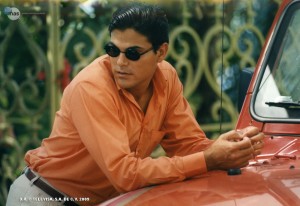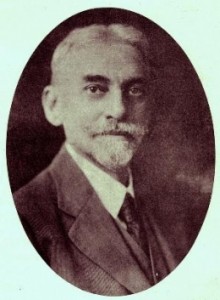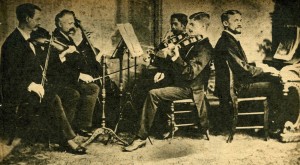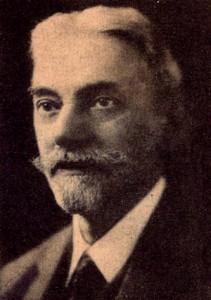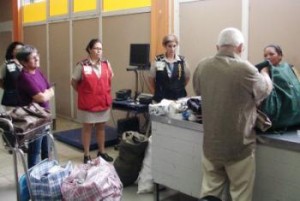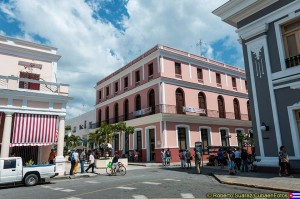Francisco Gattorno, “Abismo de Pasión” actor, TV personality.
 Francisco Alejandro Gattorno Sánchez (Spanish pronunciation: [fɾanˈsisko ɣaˈtorno]; born October 12, 1964), better known in the show business world plainly as Francisco Gattorno, is a Cuban actor. He owns property in Coconut Grove, Miami, Florida.
Francisco Alejandro Gattorno Sánchez (Spanish pronunciation: [fɾanˈsisko ɣaˈtorno]; born October 12, 1964), better known in the show business world plainly as Francisco Gattorno, is a Cuban actor. He owns property in Coconut Grove, Miami, Florida.
Francisco grew up in Santa Clara. He is a son of a Canarian father, and mother whose grandparents descended from the French colonial population of Saint Domingue. He became interested in acting and directing as a young man. As a child, Gattorno became very fond of Cuban customs, such as Cuban music and sports. It was acting and directing, however, that occupied his interests more. Because of that, Gattorno studied acting, both at home in Cuba and in Mexico. He earned Mexican citizenship during the early 2000s.
His next job took him to Spain, as he participated in the 1992 Cuban-Spaniard production Me Alquilo Para Soñar. In 1993, Gattorno proceeded to work on another Cuban film, Sueño Tropical. Gattorno was by then a well-known actor in Cuba. His salaries, however, were comparatively small compared to those of well known actors in other Latin American countries.
Gattorno travelled to Chile before 1993 was over, to participate in filmmaker Paola Castillo’s short production, Los Perros Tambien Tienen Hambre. Los Perros Tambien Tienen Hambre runs for an approximate total of four minutes. In 1994 was a breakthrough year for Gattorno: he moved to Mexico, participating in the well-known film Fresa y Chocolate (“Strawberry and Chocolate”), a film about a homosexual who falls in love with a communist man. Gattorno played Miguel in Fresa y Chocolate.
Having established himself in Mexico, Gattorno debuted on Televisa’s telenovelas in 1995, acting as Josè Maria in La Dueña. In La Dueña, Gattorno acted alongside well-known Mexican actors such as Angélica Rivera, Salvador Sánchez and Eduardo Santamarina, among others. He also met his future wife, Cynthia Klitbo, at the time, a budding star herself.
http://youtu.be/M22KiE6M_rw
Lo que la vida me robo – Telenovelas.
In 1996, Gattorno acted alongside another list of well-known actors, including Costa Rican Maribel Guardia and Mexicans Joan Sebastian (Guardia’s longtime husband), Olga Breeskin, Sebastian Ligarde, Claudio Báez, Itatí Cantoral, César Bono, José Ángel Garcia, Carlos Miguel, Guadalupe Esparza (of the well-known music group Bronco) and many others in Tu y Yo, which became an international hit, becoming one of the most viewed shows among Hispanics in the United States.
Tu y Yo was followed by Cañaveral de Pasiones, where Gattorno acted alongside fellow Cuban César Évora and other well-known Mexican actors, such as Angélica Aragón and others. Cañaveral de Pasiones was an important stepping stone in Gattorno’s career; after this soap opera was over, many media outlets began to talk about his relationship with Klitbo, with whom he did not have any children.
Gattorno had become a sex symbol among females in Mexico and Latin America, and among Hispanic females in the United States.
Gattorno and actress Klithbo eventually divorced; Gattorno’s fame kept growing, and, in 2000, he made his Hollywood debut, as Jorge Camacho in the low-budget film Before Night Falls. Gattorno then travelled to Colombia in 2001, to play Andres Bustamante in Amantes del Desierto. Soon after, he met Belmaris González Suazo, a Cuban ballet dancer who would become Gattorno’s second wife. The couple share two daughters, Isabella and Carolina Alicia.
By then, Gattorno’s fame had made him appear on the covers of some major Spanish language magazines in the United States. Gattorno finished 2002 (and began 2003) acting in another major teenage telenovela hit, Clase 406, where he acted alongside Michelle Vieth. Gattorno then took a one year and a half hiatus from telenovelas.
In the new version of Abismo de pasion is based on the remake of Cañaveral de Pasiones. He played Braulio is a Gabino and Lucio’s boss of Arango Pepper Processing Company (La Anita/Santa Maria)’s peppers worker, he is the stepfather of Vicente (Adriano Zendejas) and husband of Antonia (Vanessa Arias). In 2012, he joined the cast of the telenovela Amores verdaderos (telenovela), playing Santino “Salsero” Roca, the main antagonist / main villain of the story.
In 2013, he joined the cast of the telenovela Lo Que La Vida Me Robó playing Sandro Navarez, the secondary villain.
His last Telenovelas.
Lo Que La Vida Me Robó (2013-14) – Sandro Navarez (Villian)
Amores verdaderos (telenovela) (2012–13) – Santino “Salsero” Roca (Villain Principal)
Abismo de pasion (2012) – Braulio
Atrévete a soñar (2009) – Carlos Rincón
Agencies/Various/InternetPhotos/www.thcubanhistory.com
The Cuban History, Hollywood.
Arnoldo Varona, Editor.
FRANCISCO GATTORNO: Actor, Personalidad de la TV.
Francisco Gattorno Alejandro Sánchez ( pronunciación española: [fɾansisko ɣatorno]; nacido el 12 de octubre de 1964), más conocido en el mundo del espectáculo claramente como Francisco Gattorno, es un actor cubano. Él es dueño de la propiedad en Coconut Grove, Miami, Florida.
Francisco creció en Santa Clara. Él es hijo de un padre canario y madre cuyos abuelos descendientes de la población colonial francesa de Saint Domingue. Se interesó por la actuación y dirección en su juventud. Cuando era niño, Gattorno volvió muy aficionado a la aduana cubana, como la música y el deporte cubano. Se estaba actuando y dirigiendo, sin embargo, que ocupaba sus intereses más. Debido a eso, Gattorno estudió actuación, tanto en casa como en Cuba y en México. Obtuvo la ciudadanía mexicana durante la década de 2000.
Su siguiente trabajo lo llevó a España, ya que participó en el 1992 la producción cubano-español Me Alquilo Para Soñar. En 1993, Gattorno procedió a trabajar en otra película cubana, Sueño Tropical. Gattorno era para entonces un actor muy conocido en Cuba. Sus salarios, sin embargo, eran relativamente pequeñas en comparación con las de actores conocidos en otros países de América Latina.
Gattorno viajó a Chile antes de 1993 había terminado, a participar en la producción de cortos del cineasta Paola Castillo, Los Perros Tambien Tienen Hambre. Los Perros Tambien Tienen Hambre tiene una duración de un total aproximado de cuatro minutos. En el año 1994 fue un año decisivo para Gattorno: se trasladó a México, participando en la conocida película Fresa y Chocolate (“Fresa y Chocolate”), una película sobre un homosexual que se enamora de un hombre comunista. Gattorno jugó Miguel en Fresa y Chocolate.
Habiéndose establecido en México, Gattorno debutó en las telenovelas de Televisa en 1995, en calidad de José María en La Dueña. En La Dueña, Gattorno actuó junto a actores mexicanos conocidos como Angélica Rivera, Salvador Sánchez y Eduardo Santamarina, entre otros. También conoció a su futura esposa, Cynthia Klitbo, en ese momento, una estrella en ciernes a sí misma.
http://youtu.be/M22KiE6M_rw
Lo que la vida me robó – Telenovelas.
En 1996, Gattorno actuó junto a otra lista de conocidos actores, entre ellos Costa Rica, Maribel Guardia y mexicanos Joan Sebastian (de toda la vida al marido de Guardia), Olga Breeskin, Sebastián Ligarde, Claudio Báez, Itatí Cantoral, César Bono, José Ángel García, Carlos Miguel , Guadalupe Esparza (del conocido grupo musical Bronco) y muchos otros en Tu y Yo, que se convirtió en un éxito internacional, convirtiéndose en uno de los programas más vistos entre los hispanos en los Estados Unidos.
Tu y Yo fue seguido de Cañaveral de Pasiones, donde Gattorno actuó junto a su compatriota cubano César Évora y otros actores mexicanos bien conocidos, tales como Angélica Aragón y otros. Cañaveral de Pasiones es un escalón importante en la carrera de Gattorno; después de esta telenovela terminó, muchos medios de comunicación comenzaron a hablar sobre su relación con Klitbo, con quien no tuvo hijos.
Gattorno había convertido en un símbolo sexual entre las mujeres en México y América Latina, y entre las mujeres hispanas en los Estados Unidos.
Gattorno y actriz Klithbo finalmente se divorció; La fama de Gattorno fue creciendo y, en 2000, hizo su debut en Hollywood, como Jorge Camacho en la película de bajo presupuesto antes de que anochezca. Gattorno luego viajó a Colombia en 2001, para jugar Andrés Bustamante en Amantes del Desierto. Poco después, conoció a Belmaris González Suazo, una bailarina de ballet cubano que se convertiría en la segunda esposa de Gattorno. Los dos comparten dos hijas, Isabel y Carolina Alicia.
Para entonces, la fama de Gattorno había hecho aparecer en las portadas de algunas de las principales revistas en español en los Estados Unidos. Gattorno terminó 2002 (y comenzó 2003) que actúan en otro golpe importante telenovela adolescente, Clase 406, donde actuó junto a Michelle Vieth. Gattorno luego tomó un año y medio hiato de telenovelas.
En la nueva versión del Abismo de pasión se basa en el remake de Cañaveral de Pasiones. Jugó Braulio es un Gabino y el jefe de Lucio de Arango Pimienta Processing Company (La Anita / Santa Maria) ‘s pimientos trabajador, éste es el padrastro de Vicente (Adriano Zendejas) y esposo de Antonia (Vanessa Arias). En 2012, se unió al elenco de la telenovela Amores verdaderos (telenovela), jugando Santino “Salsero” Roca, el principal antagonista / villano principal de la historia.
En 2013, se unió al elenco de la telenovela Lo que la vida me robó jugando Sandro Navarez, el villano secundario.
Sus últimas telenovelas.
Lo que la vida me robó (2013-14) – Sandro Navarez (Villian)
Amores verdaderos (telenovela) (2012-13) – Santino “Salsero” Roca (Villano Principal)
Abismo de pasión (2012) – Braulio
Atrévete a soñar (2009) – Carlos Rincón
Agencias / Varios / InternetPhotos / www.thcubanhistory.com
La Historia de Cuba, de Hollywood.
Arnoldo Varona, Editor.



